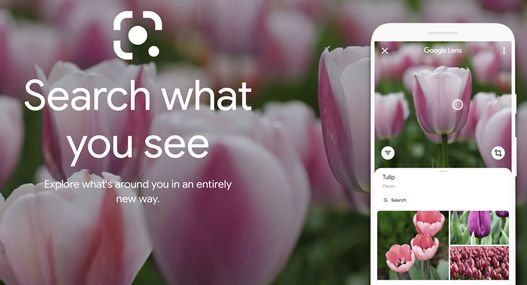3. Siri, Find My Phone: Optimize for Voice Search
How much easier is it to simply say “hey, Siri…” than all that pesky typing. Since the introduction of these ever-present assistants a “hey” away, voice search has exploded and is expected to continue to exponentially increase.
Already in 2020, more than1/2 of all searches are done through voice and the percentage is even higher when searching for local business information on a mobile device. “Siri, find sushi near me!” Actually, you don’t need to include the “near me” anymore. Google automatically will display the locations nearest you for local-based search intent.
On a sidetone, there is also a rapid rise in image-first search on mobile, which may very well be the next big search factor on the horizon.
Simply point your camera at an object and search “results” are returned that can describe the item, translate foreign text, give you shopping options, add an event to your calendar from a show poster, show the most popular items on a menu and so much more.
If you haven’t tried the Google Lens app yet, you’re not among the 50 million other people that have. I discovered this a couple of years ago on a trip to Tokyo and used the translate feature often. It allows you to simply point your camera at any text in Japanese (or any other language) and it’s converted to English instantly. Nothing lost in translation!
This is definitely something we’ll be keeping an “eye” on and may include visual optimization tips in the 2021 version of this book.


For now, let’s “focus” on optimizing for voice search. It’s important to keep top of mind the same strategies listed in the last chapter to consider the primary intention of the user and the conversational phrasing of questions.
Once you have developed your keyword library, sorted out user intent for your products/services and determined some of your top keywords, phrases, questions and supporting semantic text, the primary method of optimizing for voice search is to create content that asks and answers those exact questions.
5 Simple ways to optimize for voice search:
- Create FAQ pages. These are generally short, specific questions accompanied immediately by direct answers. Keep answers concise and to the point, generally no longer than 30 words. This is your prime opportunity to get featured in a knowledge block.
- Optimize for the featured snippet. The gold medal in organic search engine optimization is to be featured in that coveted boxed text area that displays ABOVE all other organic results. Gee, imagine beating the #1 position! The featured snippet is often provided as THE only answer to a voice query. We’ll go through this in more detail in the next Chapter.
- Write simply and naturally. Searchers tend to ask questions in full sentences at around a 9th grade level. Be sure you use some of the questions from your keyword library optimized for those exact phrases. A handy, free tool for assessing the readability of your content is https://readable.com/ .
- Boost your site speed. Google wants to deliver voice results instantly, which means they greatly favor fast loading websites. We explore the various way to reduce page load time in Chapter 5.
- Optimize your Google My Business (GMB) listing. The overwhelming majority of voice queries are related to finding local businesses. Be sure your GMB listing is current, accurate, active and do your best to get those valuable customer reviews. More details and some super-current updates on Google My Business tactics in Chapter 8.